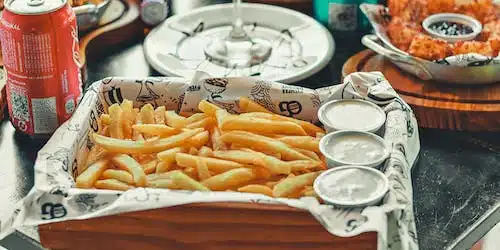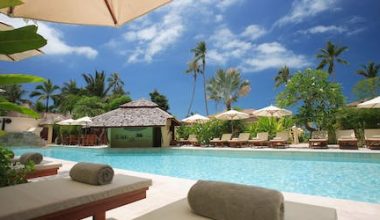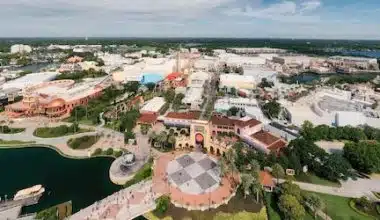Embarking on a magical journey to Disneyland? Unravel the question of whether you can bring your food to enhance your theme park experience. Disneyland Resort permits guests to bring outside food and non-alcoholic beverages for self-consumption, but with certain restrictions. These include not bringing glass containers, alcohol, marijuana, loose ice, commercial food, large coolers, heating devices, or food storage unless dietary restrictions or baby food/formula are met. For further information, you can read more in this post.
Can You Bring Food To Disneyland?
Disneyland Resort allows guests to bring outside food and non-alcoholic beverages into the parks for self-consumption, provided they are not in glass containers and sharp knives are not allowed. However, there are some guidelines and restrictions that visitors should be aware of. Here are the guidelines for bringing food into Disneyland:
Guidelines for Bringing Food into Disneyland
#1. No Glass Containers
Glass containers, except for baby food jars, are prohibited from being brought into the parks.
#2. No Alcohol
Outside alcoholic beverages are not allowed inside Disneyland Resort.
#3. No Marijuana or Illegal Substances
Smoking marijuana or other illegal substances is strictly prohibited at any time within the parks.
#4. No Loose Ice
Loose ice is not permitted inside the parks. However, reusable ice packs are allowed.
#5. No Commercial Food
Bringing in commercially prepared, pre-packaged, or restaurant food is generally not allowed. Exceptions may be made for guests with specific dietary restrictions or baby food or formula.
#6. No Large Coolers
Large coolers, such as those on wheels, are not permitted inside the parks. However, smaller coolers that can fit inside a standard backpack or bag are allowed.
#7. No Heating Devices
Heating devices, such as portable stoves or grills, are not allowed inside the parks.
#8. No Food Storage
Disneyland Resort does not provide storage for outside food. Guests are responsible for carrying and storing their food items.
#9. Security Screening
All bags, including coolers and backpacks, are subject to a thorough security screening upon entry to the parks. This is to ensure the safety of all guests.
#10. Allergy-Friendly Food Options
If you have specific dietary restrictions, you are allowed to bring in your food to accommodate those needs.
#11. Picnic Areas
Disneyland Resort provides designated picnic areas for guests who wish to enjoy their food. These areas are located just outside the main entrance, and guests can enter and exit the parks freely to access these areas.
#12. Small Snacks and Treats
Small snacks and treats, such as granola bars, fruit, or cookies, are generally allowed. It’s best to bring individually wrapped or pre-packaged items for convenience and ease of inspection.
Guidelines on Where to Eat at Disneyland
When visiting Disneyland, there are several options for dining and enjoying your meals. They include
#1. Disneyland Restaurants
Disneyland Resort offers a wide range of dining options within the theme parks, including quick-service restaurants, table-service restaurants, and snack stands. These restaurants serve a variety of cuisines, from classic American fare to international flavors.
#2. Downtown Disney District
The Downtown Disney District, located just outside the theme parks, is a vibrant entertainment area with numerous dining options. Guests are allowed to bring wine into the Downtown Disney District to be consumed at select table-service restaurants, but corkage fees may apply.
#3. Picnic Areas
Disneyland Resort provides designated picnic areas where guests can enjoy their food. These areas are located just outside the main entrance and offer tables and seating. One such picnic area is the Disneyland Picnic Area, which provides a quieter space away from the crowds.
#4. Benches and Open Spaces
Throughout the parks, you can find benches and open spaces where you can sit and enjoy your food. However, during busier times or close to parade times, it may be challenging to find available seating. Mickey’s Toontown in Disneyland has open grass areas where guests can spread out and have a picnic meal.
#5. Disney Hotels
Disneyland Resort features several hotels that offer dining options for guests. These hotels have their own restaurants and lounges where you can enjoy a meal or grab a quick bite. Whether you’re staying at one of the Disneyland Resort hotels or simply visiting, these dining options provide convenient and enjoyable experiences.
#6. Special Dietary Needs
Disneyland Resort strives to accommodate guests with special dietary needs. Many of the dining locations offer options for guests with allergies, intolerances, or specific dietary restrictions. You can inquire about these options at the dining locations or contact Disneyland Resort in advance for assistance.
#7. Mobile Ordering
To enhance convenience and save time, Disneyland Resort offers mobile ordering through its official mobile app. This allows guests to browse menus, place orders, and make payments from their mobile devices. It’s a convenient way to skip the line and have your food ready for pickup at select quick-service restaurants.
Guidelines on Where Not to Eat at Disneyland
While Disneyland Resort offers a variety of dining options, there are a few places where eating is not permitted or may be restricted.
Here are some guidelines on where not to eat at Disneyland
#1. Attractions and Rides
Eating is generally not allowed on attractions and rides at Disneyland. For safety reasons, guests are advised to finish their food before entering any attractions or boarding rides. This ensures the safety of all guests and helps maintain the cleanliness of the attractions.
#2. Queues and Lines
It is not appropriate to eat while waiting in queues or lines for attractions, shows, or character meet-and-greets. This is to ensure that everyone has a fair and enjoyable experience without obstruction or potential mess.
#3. Indoor Theaters and Shows
While enjoying indoor shows and theaters, it is generally not permitted to consume outside food. This is to maintain cleanliness and prevent any disturbances during the performances. However, Disneyland Resort offers a variety of food options within or near these venues, allowing guests to enjoy a meal before or after the show.
#4. Restricted Areas
There are certain areas within the parks where eating is not allowed. These areas may include backstage areas, cast member-only areas, or specific sections designated for other purposes. It’s important to follow the signage and guidelines provided by Disneyland Resort to ensure a pleasant experience for everyone.
Benefits Of Disneyland’s Food Guidelines
#1. Cost Savings
Bringing your food to Disneyland can help you save money on dining expenses. Food and beverages inside the park can be quite expensive, so bringing your snacks and meals can be a budget-friendly option.
#2. Dietary Accommodations
By bringing your food, you have more control over your dietary needs and restrictions. Whether you have specific allergies, follow a special diet, or simply prefer homemade meals, bringing your food ensures that you have suitable options available.
#3. Convenience
Having your food on hand allows you to eat whenever and wherever you choose, without having to wait in long lines or search for available dining options. This can be particularly beneficial if you have young children or if you prefer to have meals at your own pace.
#4. Flexibility
Disneyland’s food guidelines allow you to bring non-alcoholic beverages as well. Staying hydrated throughout the day is important, especially in a theme park setting, and having your drinks readily available can help you stay refreshed.
#5. Special Dietary Needs
Disneyland is known for accommodating guests with special dietary needs. However, if you have specific requirements or preferences, bringing your food ensures that you have exactly what you need, without relying solely on the park’s offerings.
#6. Customization
Bringing your food allows you to customize your meals according to your preferences. You can pack your favorite snacks, fruits, and sandwiches, ensuring that you have food options that you genuinely enjoy.
#7. Healthier Choices
By bringing your food, you have control over the ingredients and nutritional content of your meals. This allows you to make healthier choices and prioritize your dietary needs, which can be especially important for individuals with specific health goals or dietary restrictions.
#8. Reduced Waiting Time
Dining establishments within Disneyland can get busy, especially during peak hours. By bringing your food, you can skip the lines and enjoy your meals without having to wait for service or find available seating.
#9. Avoiding Allergens
If you or someone in your group has food allergies, bringing your food ensures that you can avoid potential allergens. This can provide peace of mind, especially for individuals with severe allergies who may be concerned about cross-contamination or limited food options within the park.
#10. Preference for Home-Cooked Meals
Some people simply prefer the taste and comfort of homemade meals. Bringing your food allows you to enjoy the familiarity and flavors of your culinary creations, adding a personal touch to your Disneyland experience.
Additional Guidelines To Be Aware Of When Visiting Disneyland
#1. Theme Park Reservations
To visit the parks, you will need both valid admission tickets and park reservations. It is important to make reservations in advance to secure your desired dates and park access.
#2. Prohibited Items
Disneyland Resort has a list of prohibited items that are not allowed inside the parks. This includes items such as glass containers, weapons, drones, and recreational devices like skateboards or scooters.
#3. Lighting and Visual Effects
Disneyland Resort utilizes specialty lighting and visual effects throughout the parks. This includes the use of strobe lights and other visual effects that may affect guests with certain sensitivities.
#4. Virtual Queues
Some attractions at Disneyland Resort may utilize virtual queues. This allows guests to request a time slot to experience the attraction later in the day, freeing up time to enjoy other experiences while waiting.
#5. Weekday Visits
To avoid crowds, it is advisable to schedule your visit to Disneyland Resort on weekdays rather than weekends. Weekdays tend to be less crowded, providing a more enjoyable experience.
#6. Attractions and Ride Considerations
Some attractions may be dark or have elements that could potentially scare young children. It’s recommended to research attractions beforehand to ensure they are suitable for your group.
#7. Optimize Your Visit
Disneyland can be a popular choice for both locals and tourists, leading to crowds. To optimize your trip, consider visiting on weekdays rather than weekends when they tend to be less crowded.
#8. Accessibility
Disneyland Resort offers services and guides to assist guests with disabilities. These include guides for guests with disabilities, audio information for attractions, and the Disability Access Service (DAS) for guests with cognitive disabilities.
#9. Weather Considerations
Keep an eye on the weather forecast and dress accordingly. Southern California can have varying weather conditions, so it’s advisable to bring appropriate clothing and accessories for sun, rain, or cooler temperatures.
#10. Follow Park Rules
Familiarize yourself with the park’s rules and regulations to ensure a safe and enjoyable visit. This includes adhering to the no-smoking policy, respecting designated areas, and following any specific guidelines provided by Disneyland Resort.
What Food Can You Bring to Disneyland?
Guests are allowed to bring outside food and non-alcoholic beverages into Disneyland Park and Disney California Adventure Park. However, there are some guidelines to follow, such as not bringing glass containers (except for baby food jars) and bringing a reasonable amount of food for self-consumption.
What Are You Not Allowed To Bring To Disneyland?
There are several items that you are not allowed to bring into Disneyland. These include firearms, ammunition, weapons, self-defense or restraining devices, marijuana, coolers larger than 6-pack size, glass containers (except for baby food jars), illicit or hazardous substances, alcoholic beverages, costumes for guests 14 years of age or older, water guns, handcuffs, and prop swords.
Are Backpacks Allowed In Disneyland?
Yes, backpacks are allowed in Disneyland. Visitors are allowed to bring backpacks into the park. The guidelines include that backpacks must be smaller than 24″ long x 15″ wide x 18″ high (61 cm x 38 cm x 46 cm) and they should not have wheels. Some rides may have small compartments at your seat where you can stash your backpack, while others may not have designated storage areas.
What Should I Pack For Disneyland?
The items to pack for a trip to Disneyland include comfortable clothing, comfortable walking shoes, a backpack or bag, sunscreen, a refillable water bottle, tickets and identification, snacks, a portable charger, and essential toiletries.
Do You Have To Bring Your Toilet Paper To Disneyland?
No, you do not have to bring your toilet paper to Disneyland. Disneyland provides toilet paper in their facilities. Guests staying at Disney Vacation Club resorts will also be provided with toilet paper, paper towels, and tissues to start their stay. However, it’s always a good idea to have personal hygiene items on hand, such as travel-sized toilet paper or tissues, in case of emergencies or personal preference.
What Bags Are Allowed At Disney?
The bag policies at Disney parks may vary slightly but some general guidelines are Bags, including backpacks, may be subject to screening and security checks. Typically, suitcases, large bags, and coolers are not allowed, while smaller bags within specific size limits are permitted. Guests are usually allowed to bring bags on rides as long as they meet the size requirements.
Conclusion
Disneyland Resort has guidelines on where not to eat, including attractions and rides, queues and lines, indoor theaters, and restricted areas. Guests can bring their snacks, meals, non-alcoholic beverages, and special dietary needs, ensuring they have suitable options for their specific needs and preferences. This flexibility helps guests stay hydrated and enjoy their dining experience. Disneyland Resort requires theme park reservations, prohibits certain items, uses special lighting and visual effects, and may use virtual queues for certain attractions, ensuring guests have a smooth experience.
- BEST PLACES TO STAY NEAR DISNEY WORLD
- HOTELS NEAR DISNEY WORLD WITH SHUTTLE
- BEST TIME TO GO TO DISNEY WORLD
- LEAST BUSY TIME AT DISNEY WORLD
- ARE DISNEY TICKETS REFUNDABLE? All You Need To Know






